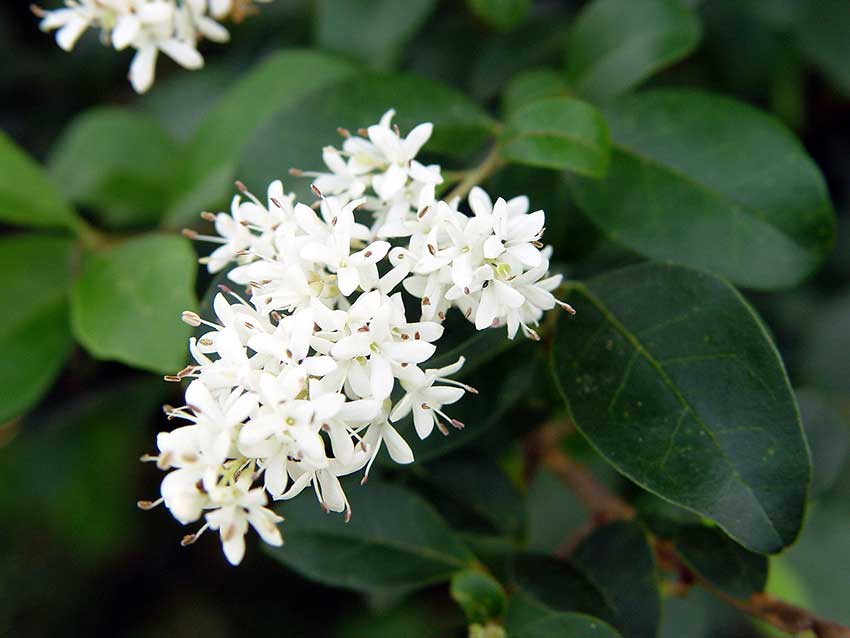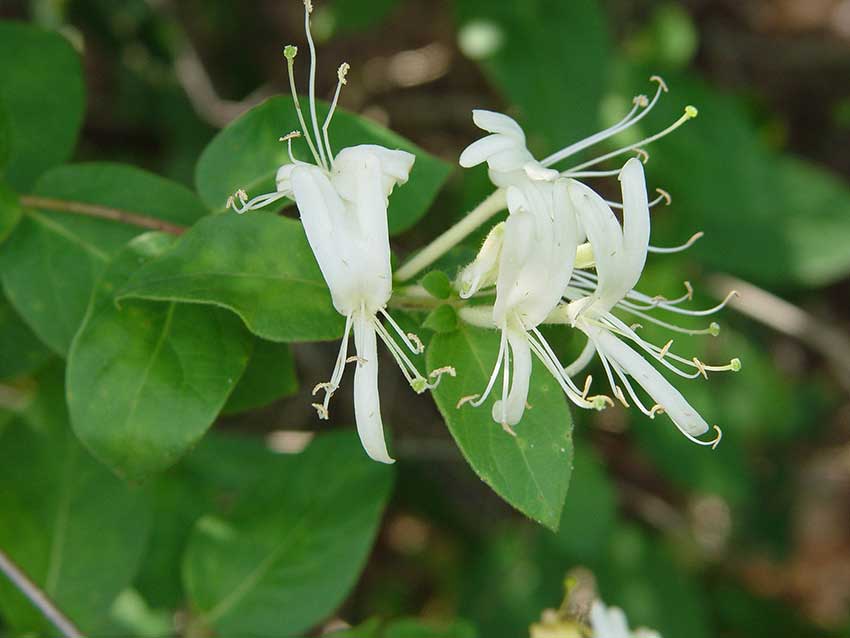RiskVA
The Sweet Smell of Texas 10 May 2006
Sweet fragrances have been wafting on the breezes for several weeks as spring has prompted the opening of myriads of flowers in East Texas. One of the most impressive contributors to this symphony of aromas is privet with its cascades of small, but very sweet-smelling white flowers. Roadsides throughout the area abound with privet shrubs, and this year they’ve been literally blanketed with flowers. Adding to privet’s sweet, clear, crisp fragrance, honeysuckles have also come into bloom, producing a mellower, warmer, deeper, more subtle accent to the aromatic beauty of the season. You can also enjoy their taste. Pull off a blossom, nip off the base and suck out the sweet nectar. Today I see the Mimosa in the backyard is blooming, too. Its delicate, gentle, tantalizing fragrance will provide a fragile underlying accent to spring breezes.
Trying to describe flower fragrances is almost impossible and makes me sound like wine connoisseurs waxing eloquent over the “bouquet” of the fruit of the vine. Since I don’t drink, I can’t relate to their descriptions of that beverage. So, should I say I don’t drink but I do smell and so does everyone? No, somehow that seems wrong! Let’s just say we all sniff the air and the rich aromatic blends nature provides add to the overall beauty and pleasure of spring.
Although scientists don’t really know if insects and other animals perceive fragrances in the same terms we do, it is certain that flower fragrances govern which animals are attracted to them.
Generally, sweet-smelling flowers attract hummingbirds, butterflies, bees, and other insects that harvest powdery pollen and liquid nectar for food. In the process of blundering around they transfer pollen from flower to flower and plant to plant assisting in fruit and seed development.
Flowers that we think of as bad smelling are usually visited by flies and beetles that are normally attracted to dead animals. In fact, some flowers closely mimic the odor of decay to such an extent that they smell nauseating to humans. The flies and beetles visiting these plants also accomplish pollen transfer.
Some flowers, such as Night Blooming Jasmine and Evening Primrose, have little or no fragrance during the day but fill the night with their perfume. The primrose, in fact, closes up during the day to discourage insect visits except after dark. Night-blooming plants depend on night-flying animals like sphinx moths and even bats to do their pollinating.
Interestingly, not everyone perceives aromas the same. In passing flowers around university classes in natural resources, I found that student reactions varied greatly. Although there was usually a fairly good consensus about how the flower smelled, there was a wide range of responses. The same flower was described from strongly scented to almost odorless, and from very pleasant to downright unpleasant.
Flower fragrances have been appreciated for generations of time, and aromatic substances extracted from flowers have been used to manufacture perfumes, lotions, and scented oils far back into antiquity. Some credit Persia, modern day Iran, as the earliest source of such cosmetic uses of flowers.
Although we usually associate perfumes and other pleasant fragrances merely as a nice accent to physical beauty, there have long been more utilitarian uses for them. Scented powders and perfumes were used in France many years ago to mask unpleasant body odors, although it is said that some of the French royalty preferred to be smelly, a trait that those in the court tried to avoid by wearing perfume to cover the stench of the royals.
Tobacco smoking may have had its birth in France about 1556, introduced by a diplomat named Jean Nicot. Remember nicotine? It is said the French smoked “like a chimney” and their clothing and furniture became thoroughly impregnated with the rank odor of stale tobacco smoke. Perfume provided a needed house and clothing deodorant.
Disease and death brought other less than desirable odors, and both flowers and perfume were used to overcome their pervasive affects as well.
In our case today, just go outside and be a dog. Close your eyes and gently blow out a couple of times to clear your nose’s sensors, and then rapidly snuffle like your canine. You’ll be amazed at how much your nose knows. It will certainly appreciate the sweet smell of Texas.
Dr. Risk is a professor emeritus in the College of Forestry and Agriculture at Stephen F. Austin State University in Nacogdoches, Texas. Content © Paul H. Risk, Ph.D. All rights reserved, except where otherwise noted. Click paulrisk2@gmail.com to send questions, comments, or request permission for use.


